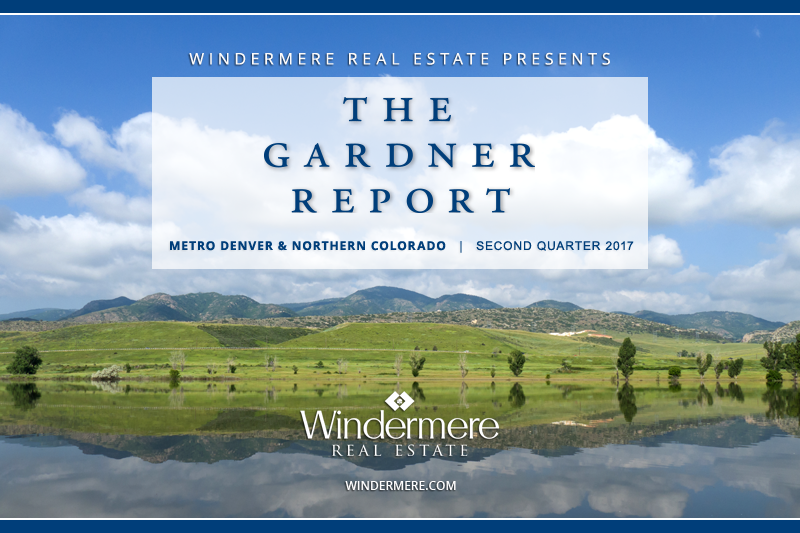You can download the 4-page PDF here: Gardner Report PDF Download
|
|||||||||||||||||||
|
|||||||||||||||||||
|
|||||||||||||||||||
|
|||||||||||||||||||
|

Last night was our annual Market Forecast event. Thank you to the 400 clients and friends who joined us at the Marriott.
Here are our predictions for where prices are going in 2018:
Last year’s average price increases looked like this:
Low inventory will persist in many parts of the market during 2018. But, like we mentioned last night, there are many parts of the market where the market is in balance or even over-supplied with homes. All markets are local!
Our Cheif Economist, Matthew Gardner, shared several of his insights including his prediction for interest rates one year from now which is 4.4% (about 0.5% higher than today).
For buyers thinking about waiting until the market cools off, there is a tangible cost to that wait. If prices and interest rates go up as we predict, a one-year wait would equal over $200 per month for a $400,000 home.
In case you missed the event, you can read more about it here in the Loveland Reporter-Herald. They did a great recap of our presentation. CLICK HERE

House Republicans released their proposed tax bill last Thursday. The proposal is a long way from becoming law, but the draft contains three noteworthy items related to housing.
As the law stands now, homeowners can claim as an itemized deduction interest paid on mortgages valued up to $1 million used to acquire or improve a first and/or second home. The plan maintains the current cap for existing homeowners, but cuts it to $500,000 for homes purchased in the future. (The bill would also limit the mortgage interest deduction to one principal home, ending any deductions for vacation homes.)
Another change is to the provision that allows homeowners to exclude from their taxable income up to $250,000 in capital gains ($500,000 for married taxpayers) from a sale of their primary residence. Under the plan, to qualify for this break, homeowners must have owned and lived in the home for at least five of the last eight years. Currently the rule is two of the last five. Taxpayer use of the exclusion would also be limited to one sale every five years, rather than one every two. In addition, under the house bill, you begin to lose the gains exemption if adjusted gross income (in a look-back period) exceeded $500,000 if married or $250,000 if single.
The third change is the proposal to cap the deduction for property tax on a home at $10,000. Currently all state and local taxes are deductible from ordinary income.
To see an update as to what is happening in the Northern Colorado market, contact me to receive our quarterly “Scoop” report.

 There are short-term questions about real estate and there are long term questions about real estate.
There are short-term questions about real estate and there are long term questions about real estate.
Clients often have short-term questions like…
How much will prices go up next year? Should I sell my house this Fall or next Spring? Will interest rates go up next week?
We encourage our clients to evaluate those questions in the context of the long-term. There are decades of data on the Northern Colorado market which reveal certain patterns.
When we show our clients these patterns they feel confident and secure in the investment they have made into their home and their rental properties.
For example, the long-term appreciation rates based on up to 41 years of research are as follows:
So over the course of a year prices may go up a lot or go up a little, but in the long term they will stay true to these long term averages.
To see an update as to what is happening in the Northern Colorado market, contact me to receive our quarterly “Scoop” report.


At some point this weekend it’s likely you will make a stop at the local grocery store. When you are there you might  pick up some produce. That produce, as you know, is priced by the pound.
pick up some produce. That produce, as you know, is priced by the pound.
Homes, aren’t priced by the pound of course. But they are priced by the foot.
An interesting way to examine an entire real estate market or a specific home is to look at the price per square foot.
For example, right now our company has a 2,470 square foot home right on the water in Seattle listed at $4,995,000. That comes to $2,022 per square foot.
Meanwhile, we also have a 2,549 square foot home for sale in Timnath priced at $445,000 which is $175 per square foot.
Price per foot is driven by many factors the most important ones being location and finishes.
Here is the average price per foot for our main markets across Northern Colorado:
If you would like to know what your home is worth, per square foot, contact me and I will get that information into your hands right away.

 A question we start to hear from clients this time of year is “am I better off waiting until the Spring to sell my home?”
A question we start to hear from clients this time of year is “am I better off waiting until the Spring to sell my home?”
The perception is that Spring is the busy time for home sales and that a Seller would be better served waiting to sell their home.
The reality is the numbers show that your odds of selling your home in the fall (and even the Winter) are just as good as the Spring. The reason is that the competition from other sellers is much lower in the Fall and Winter.
Let’s see what the numbers say…
We did an analysis of the number of homes that sold last year in each month versus the homes for sale that month and then looked at the ratio. For example, if 500 homes were for sale and 250 of them sold, the ratio would be 50%.
Here are the ratios for certain months in our 3 major Northern Colorado markets:
Fort Collins
Loveland
Greeley
So the numbers tell us that there is no advantage of waiting until the Spring.
Also, all of our clients who are listing their home now see the advantage of dealing with the “known” versus the “unknown” when it comes to interest rates, demand levels and other market factors.
If you would like to see the odds of selling in your particular neighborhood and your particular price range, contact me today.

Check out the FHFA recap video here:
Here is the data straight from FHFA’s report:
U.S. house prices rose 1.6 percent in the second quarter of 2017 according to the Federal Housing Finance Agency (FHFA) House Price Index (HPI). House prices rose 6.6 percent from the second quarter of 2016 to the second quarter of 2017. FHFA’s seasonally adjusted monthly index for June was up 0.1 percent from May.
The HPI is calculated using home sales price information from mortgages sold to, or guaranteed by, Fannie Mae and Freddie Mac. FHFA has produced a video of highlights for this quarter.
Significant Findings
Source: FHFA
The housing market is remarkably tight across the U.S., and you may be wondering if you should wait for home prices to slow before making your move. Windermere’s Chief Economist, Matthew Gardner, shares why waiting could end up costing you more money in the long run.
Should You Wait out the Housing Market?
The housing market is remarkably tight across the U.S., and you may be wondering if you should wait for home prices to slow before making your move. Windermere's Chief Economist, Matthew Gardner, shares why waiting could end up costing you more money in the long run.
Posted by Windermere Real Estate on Friday, August 18, 2017

You can download the 4-page PDF here: Gardner Report PDF Download
|
|||||||||||||||||||
|
|||||||||||||||||||
|
|||||||||||||||||||
|
|||||||||||||||||||
|